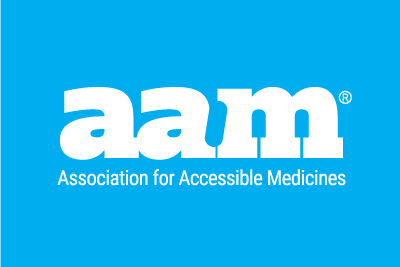First in a series, view second.
As global public health experts are working to map the spread and impact of the novel coronavirus (COVID-19), AAM will work closely with stakeholders, including the U.S. government, to help ensure that patients in the United States may continue to access FDA-approved generic and biosimilar medicines with the same quality and consistency that has served this country so well for decades. With regard to COVID-19, AAM and its members are first and foremost committed to the health of the American people by minimizing any possible disruption to access to life-saving and health-maintaining generic and biosimilar medicines.
As we consider the challenges this pandemic presents to the drug supply, it is critical to understand where our medicines come from. According to the U.S. Food and Drug Administration (FDA), 80% of brand and generic active pharmaceutical ingredient (API) manufacturing facilities are located outside of the U.S., with 13% of brand and generic API facilities are located in China. FDA data show there are a total of 1,079 API facilities worldwide that make the 370 drugs on the WHO Essential Medicines List that are marketed in the U.S. Of these factories, 15% are in China. At testimony before Congress in October, FDA Director of the Center for Drug Evaluation and Research (CDER) Janet Woodcock clarified that none of the facilities producing API for influenza treatments are produced in China.
On February 25, Reuters reported that FDA “has contacted producers of about 20 drugs that either source all of their main ingredients from or are finished in China to gauge if they will face shortages due to the coronavirus outbreak [and] [n]one of the companies reported that a shortage is expected for their drugs due to the outbreak.”
On February 27, the FDA did disclose that either a brand or generic manufacturer alerted the agency about a shortage related to a site affected by coronavirus. Commissioner Stephen Hahn stressed there are
“other alternatives [to the drug in shortage] that can be used by patients,” and that FDA is “working with the manufacturer as well as other manufacturers to mitigate the shortage.”
Under the Food and Drug Administration Safety and Innovation Act (FDASIA), our manufacturers work with the FDA as it conducts active supply chain surveillance, alerting the agency to known drug shortages. This reporting system has been in place for years because shortages—based on a myriad of market-based factors—continue to vex the pharmaceutical system. In comments before Homeland Security February 12, former FDA Commissioner Scott Gottlieb pointed out,
“There are many steps we can take to address these risks, both in the setting of this current public health crisis, as well as preparing for the next one. There will always be a next one.”
Threats to our drug supply are not new, whether they be a virus or a hurricane, and our manufacturers practice careful planning and have systems in place to mitigate them. Pharmaceutical companies, whether brand-name or generic, spend considerable time and resources proactively planning for contingencies and then adjust their ordering and scheduling needs appropriately. Diversifying the supply chain and ensuring there is no single point of failure is key to these efforts. While no one could have predicted that an outbreak would seemingly close all of China, an event such as the coronavirus outbreak is handled by our member companies in the same manner as other emergency situations, with an immediate review of their individual supply chains. Our members may then make the adjustments necessary to minimize disturbances to supply, manufacturing and distribution.
Even with so much planning and anticipation, as COVID-19 evolves, so will the operational realities facing all manufacturers. Generic drug makers remain vigilant and are closely monitoring this significant public health crisis. AAM stands ready to work with leaders in government and medicine to help ensure continued patient access. As we learn of updates related to the generic and biosimilar industry, AAM is committed to communicating with all stakeholders, from patients to policymakers, throughout the duration of this current crisis through this blog, Twitter and formal statements.
View next in the series: AAM’s COVID-19 Response: Helping Patients and Families Meet Their Health Care Needs
Jeff Francer, AAM Interim CEO and General Counsel




